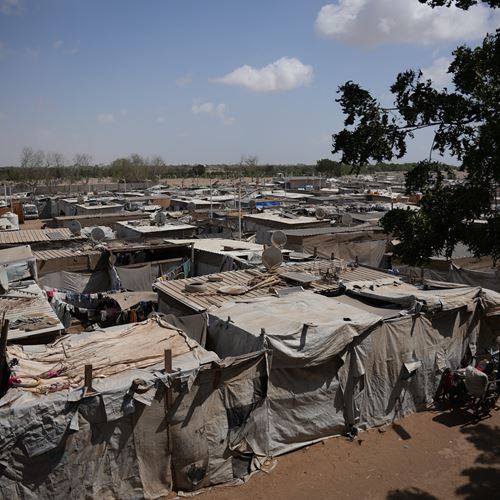
Joint Statement on Yemen Humanitarian Situation and Funding Gap
1 file(s)
98 international and national actors delivering humanitarian response in Yemen have published a joint statement highlighting the ongoing crisis and urgent funding gap. By August 2023, the Humanitarian Response Plan has seen only 31.2 percent of the USD 4.34 billion needed in funding, resulting in drastic and concerning cuts to aid, impacting the most vulnerable in Yemen.

Already exhausted by more than eight years of war, over 21.6 million people, 75 percent of the Yemeni population, are grappling with humanitarian needs.
Today, we are still faced with 17 million people who are food insecure. This includes 6.1 million people in the emergency phase under the Integrated Food Security Phase Classification (IPC), which signifies extreme food shortages and acute malnutrition, especially affecting women and children, with a risk of hunger-related deaths.
Yemen faces critical water shortages for both agricultural production and human use. Nearly 15.4 million people require access to safe water and sanitation to avoid being at risk of cholera and other deadly diseases. Overcrowded living conditions in camps, low immunization rates, and inaccessibility to many children, have seen an increase in measles and rubella cases.
Yemen’s health system continues to crumble under the pressure to meet increasing needs with little or no resources, resulting in an estimated 20.3 million people lacking access to healthcare. Across the country, one woman dies every two hours during pregnancy or childbirth, while 6 of 10 births occur without a skilled birth attendant. Mine clearance must be highly prioritized, as Yemen remains one of the world's most contaminated countries with explosive remnants of war (ERW) leading to death and maiming, particularly children.
Despite the magnitude of these humanitarian needs, the decreasing funding trends continue to worry the humanitarian community in Yemen, with a huge funding gap, steadily rising over the past 5 years, further compounding the situation. By August 2023, the Humanitarian Response Plan has seen only 31.2 percent of the USD 4.34 billion needed in funding, resulting in drastic and concerning cuts to aid, impacting the most vulnerable in Yemen.
As international and national actors within the humanitarian and development communities in Yemen, we acknowledge the generosity of the donor community in supporting the response over the years and urge donor Member States to urgently consider:
• Upscaling of quality and flexible humanitarian funding, in line with the 2023 Humanitarian Response Plan so that UN, INGOs, and particularly to Yemeni civil society organizations, including those supporting women and girls, are empowered to meet needs and to avoid a regression of gains made towards strengthening the resilience of the people of Yemen and support them to regain self-reliance. Yemen’s humanitarian response requires an expanded and more diversified number of donors.
• Ensuring equity of funding across sectors, including those that have traditionally seen underfunding, such as health, education, and protection, mindful that humanitarian support in these sectors has a determining role in longer-term recovery and the country's future.
• Ensuring humanitarian funding is made available as early as possible in the year and continued at regular intervals across the year to enable uninterrupted service delivery.
• Working closely with the undersigned towards collectively increasing coherence between humanitarian and development aid, within a space that supports and encourages inclusive peace efforts. Upscaling of development funding must be a priority, while at the same time not undermining humanitarian funding to address ongoing needs.
Read the whole statement below:

1 file(s)